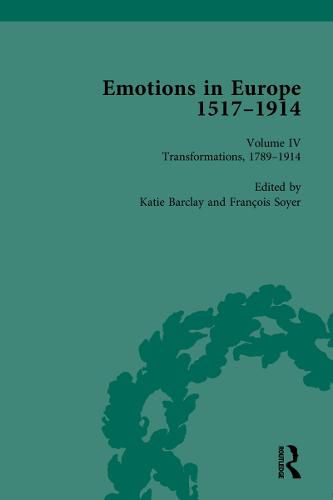Readings Newsletter
Become a Readings Member to make your shopping experience even easier.
Sign in or sign up for free!
You’re not far away from qualifying for FREE standard shipping within Australia
You’ve qualified for FREE standard shipping within Australia
The cart is loading…






This four-volume collection of primary sources focuses on the history of emotions in Europe and its empires between 1517 and 1914. Arranged chronologically, each volume examines the subjects of the self, family and community, religion, politics and law, science and philosophy, and art and culture.
The collection begins with the Reformation in 1517 as a key transformative moment in European history that required people to rethink the self, belief, and scientific knowledges - all of which shaped and were shaped by emotion. It ends with WW1, by which point psychology and modern frameworks for the self had become standard knowledges. In between, ideas and practices of emotion were not static, and part of the history charted across these volumes is the making of a new vocabulary for emotions and the self.
Sources include letters, diaries, legal papers, institutional records, newspapers, science and philosophical writings, literature and art from a diversity of voices and perspectives. Accompanied by extensive editorial commentary, this collection will be of great interest to students of history and literature.
$9.00 standard shipping within Australia
FREE standard shipping within Australia for orders over $100.00
Express & International shipping calculated at checkout
This four-volume collection of primary sources focuses on the history of emotions in Europe and its empires between 1517 and 1914. Arranged chronologically, each volume examines the subjects of the self, family and community, religion, politics and law, science and philosophy, and art and culture.
The collection begins with the Reformation in 1517 as a key transformative moment in European history that required people to rethink the self, belief, and scientific knowledges - all of which shaped and were shaped by emotion. It ends with WW1, by which point psychology and modern frameworks for the self had become standard knowledges. In between, ideas and practices of emotion were not static, and part of the history charted across these volumes is the making of a new vocabulary for emotions and the self.
Sources include letters, diaries, legal papers, institutional records, newspapers, science and philosophical writings, literature and art from a diversity of voices and perspectives. Accompanied by extensive editorial commentary, this collection will be of great interest to students of history and literature.